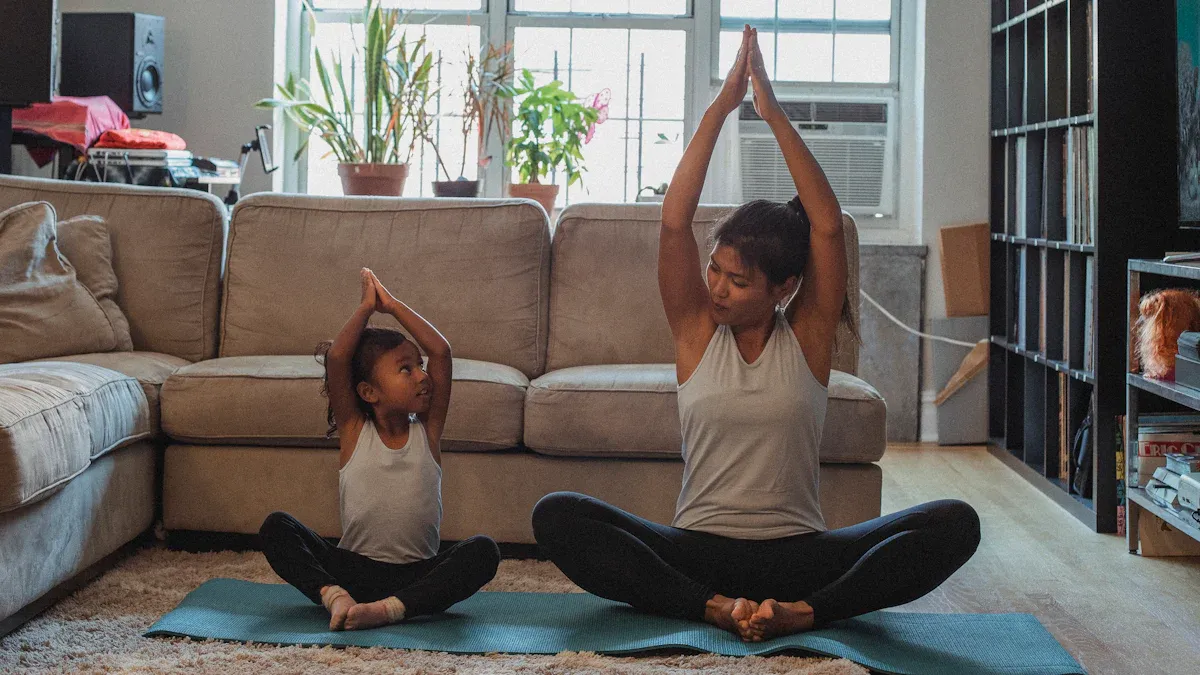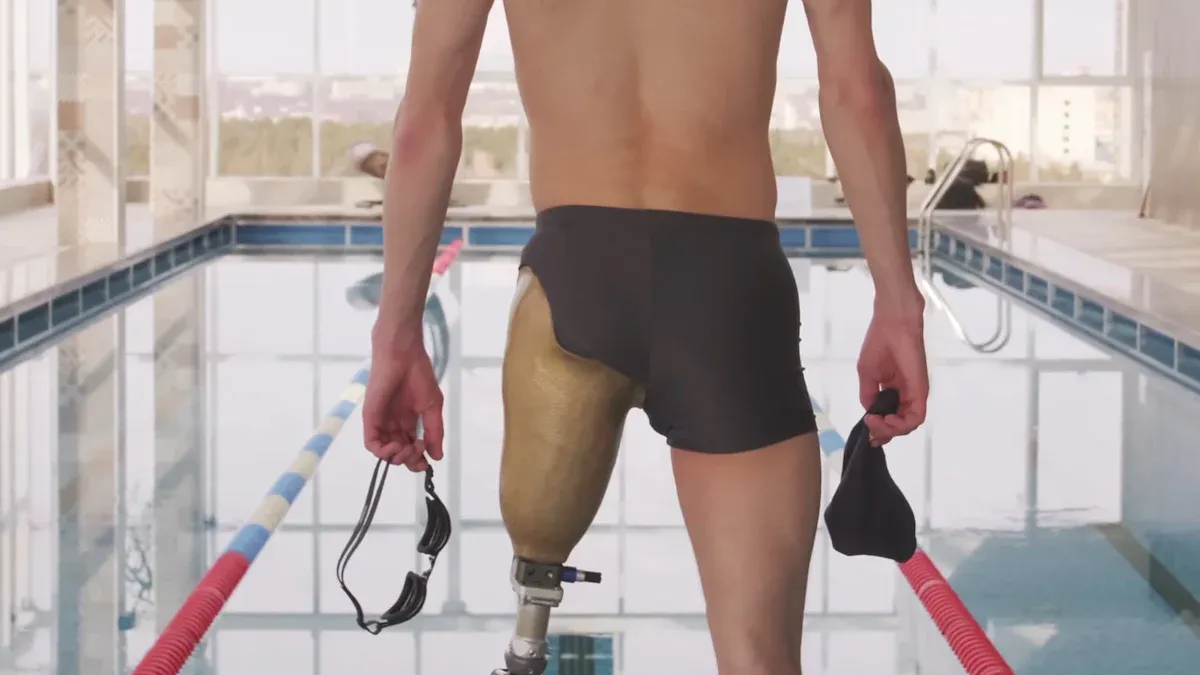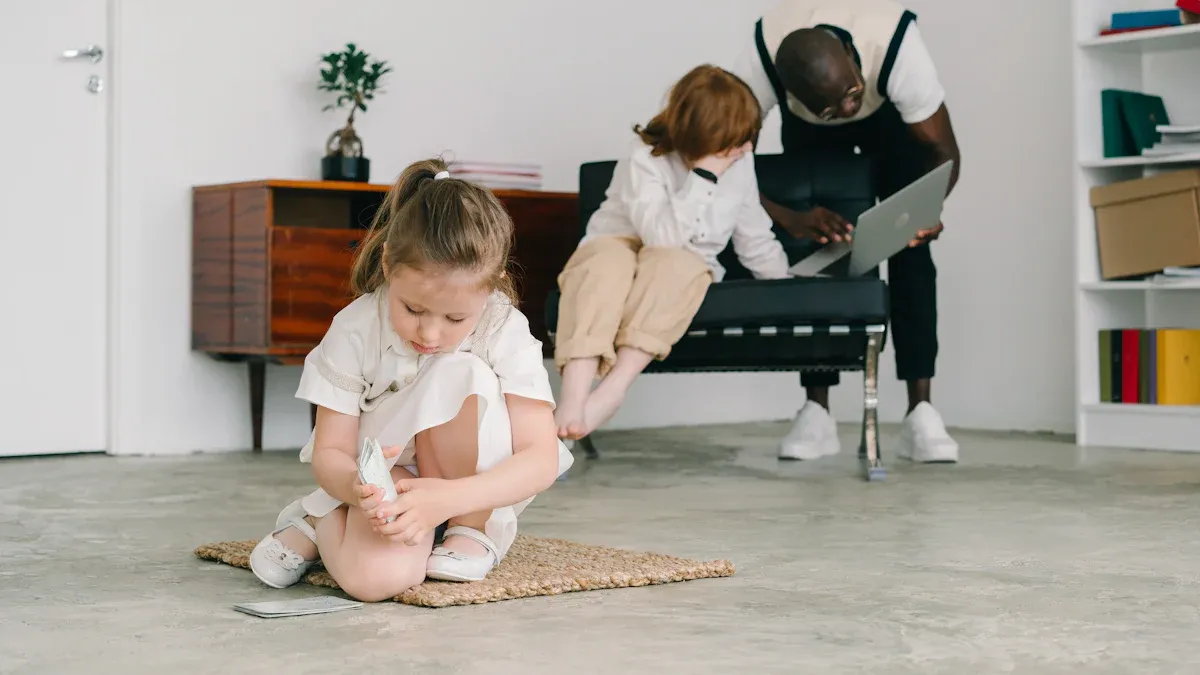How to Build a Sensory Gym for Children With Autism

You can build a sensory gym at home, even if you feel unsure where to start. Many parents ask, “How do I build a sensory gym for my child with autism?” Start by watching how your child reacts to different sensory experiences. Each child has individual needs, so trust your instincts and celebrate small wins. Remember, you know your child best!
Key Takeaways
Watch how your child reacts to different sensory things. This helps you learn what they need.
Talk to an occupational therapist if you are not sure. They can give you good advice and ideas.
Make the sensory gym neat and clean. A tidy area helps your child pay attention and feel safe.
Use many sensory tools like movement, touch, and calming items. This keeps your child interested and helps them grow.
Be ready to change the sensory gym as your child gets older. Update the equipment and activities often to fit their needs.
Sensory Needs
Observing Preferences
Each child enjoys sensory play in their own way. You may see your child likes jumping or swinging. Some children want to move a lot. Others like quiet places. Watch how your child acts with different sensory things. Do they cover their ears when you vacuum? Maybe they do not like some textures. Some get excited by bright colors. Here is a table that shows common sensory types and how they can affect your child:
Sensory Type | Description |
|---|---|
Hearing | Sounds like a vacuum or clock can feel too loud. |
Touch | Some textures or light touches may feel very bad. |
Smell | Strong smells, good or bad, can bother some kids. |
Sight | Bright lights or fast movement can hurt or upset. |
You can use this table to notice what makes your child happy or upset during sensory play.
Consulting Experts
If you are not sure about your child’s sensory needs, you can talk to an occupational therapist. These experts use tests to learn about your child’s actions. They ask about how your child feels about textures, eating, and sounds. You may hear words like sensory processing disorder or sensory integration. Occupational therapists look for signs like:
Only eating certain foods
Getting upset by sensory things
Being very sensitive or not sensitive to sensory input
A professional can help you make a sensory gym that fits your child’s needs.
Identifying Triggers
You help find what bothers your child. Some children get upset by loud sounds or strong smells. Others do not like sticky or rough textures. You can write in a journal to track what causes stress or happiness. This helps you change the sensory gym and keep your child safe. When you know your child’s sensory needs, you can help them enjoy sensory play more.
Sensory Gym Equipment

Building a sensory gym at home can be fun. You want your child to feel safe and happy. The right sensory equipment is important. You can pick different items for your child. Using many things keeps your child from getting bored. It also stops them from feeling overwhelmed. Let’s see some good choices for movement, touch, and calming.
Movement Tools
Movement tools help your child use energy and learn new skills. You can put a few in your sensory gym. Here’s a table with some favorites and what they do:
Movement Tool | Description |
|---|---|
Sensory Swings | Give a calming space. Gentle rocking helps your child regulate sensory input. |
Climbing Equipment | Boosts physical activity. Climbing improves gross motor skills and gives sensory stimulation. |
Soft Play Equipment | Offers a safe spot for active play. Your child can work on balance and coordination. |
Balance Toys | Strengthens core muscles. These toys help your child with coordination and movement. |
You may wonder why swings and therapy balls are used a lot. These tools help your child handle sensory feelings. Swinging and bouncing can calm your child. They also help your child pay attention. Many therapists use these tools to help kids feel balanced. Swings and therapy balls give deep pressure and proprioceptive input. This helps your child with sensory regulation.
Tip: Try adding a scooter board or steppers for more movement. These tools help your child move and try new things.
Tactile Elements
Touch is very important in sensory play. Some children like squishy toys. Others like rough textures. You can give your child many tactile items in your sensory gym. Here are some popular choices:
Squishy toys and textured toys
Chewy tubes for oral sensory input
Fidget spinners for busy hands
Sensory brushes for gentle touch
Textured blankets and mats
Therapy balls for rolling and squeezing
Balance beams for walking practice
Weighted blankets for deep pressure
Vibrating toys for extra stimulation
Weighted teddies and tactile boards are also good. Weighted objects and lap pads help your child focus. Deep pressure from weighted blankets or lap pads can calm your child. Many schools use these items to help kids relax and pay attention.
Note: You can change tactile items to keep things fun. Some children like to try new textures each week.
Calming Items
A sensory gym should have calming tools too. These items help your child relax when they feel stressed. You can use deep pressure items, visual tools, and fidget toys. Here are some ideas:
Weighted objects and lap pads for calming and organizing
Stress balls and fidget spinners to keep hands busy
Textured fabrics for comfort
Lava lamps and bubble tubes for gentle visual stimulation
Soft lighting or colored lights to create a peaceful mood
Deep pressure from weighted blankets or compression items helps your child feel safe. Stress balls and fidget toys give your child something to squeeze. Visual tools like bubble tubes or lava lamps make the room calm. Soft colors and gentle lights stop your child from feeling overwhelmed.
Tip: Keep your sensory gym tidy so your child can find calming items fast. A neat space helps your child feel safe and relaxed.
Variety is important in a sensory gym. You want to give different sensory input, but not too much. Use soft lights, lower noise, and gentle colors to keep things calm. Natural textures and neat spaces help your child feel good. When you pick sensory equipment, think about what makes your child feel happy and safe.
Setting Up the Ultimate Sensory Gym

Space Layout
You want your sensory gym to feel friendly and simple. Pick a spot in your home that feels safe. You do not need a big room. A small area or corner works fine. If space is tight, use compact equipment like a Sensory Compact Bounce Board. This board lets your child jump and move. It helps with balance and coordination. You can put it away when you are done.
Keep the area neat and clean. A tidy room helps your child focus and move safely. Use clear bins or baskets for sensory tools. Your child can find their favorite things fast. Set up zones for movement, tactile play, and calming. Each zone has its own toys and tools.
Here is a table with good ideas for your sensory gym:
Best Practice | Description |
|---|---|
Clutter-free environment | A clean space stops sensory overload and helps moving around. Use clear storage for easy access. |
Incorporate sensory tools | Use textured fabrics, fidget toys, and calming scents to engage the senses. |
Flexible seating options | Give bean bags and cushions for comfort and control. |
Reduce sensory triggers | Use soft lighting and soundproofing to make things calm. |
Tactile and deep pressure activities | Add weighted blankets and crash pads for calming sensory input. |
Designated sensory areas | Make zones with sensory play items your child likes. |
You can use everyday items to make your sensory gym fun and cheap. Try these ideas:
Use empty tissue boxes for tactile games.
Turn yogurt tubs into treasure boxes or castles.
Save toilet paper rolls for building or art projects.
Use old food containers to sort toys by color or size.
Practice fine motor skills with parmesan cheese containers.
If you want more movement, play laundry basketball with socks and baskets. Bubble wrap popping is a fun sensory activity for hands or feet.
Lighting and color are important in your sensory room. Soft, natural light helps your child feel calm. Stay away from bright or fluorescent lights. These can cause stress. Pick pastel or muted colors for walls and furniture. Neutral shades make the space peaceful. They help your child feel good. You can add color-changing LED lights for a soothing effect.
Safety Tips
Safety is the most important thing in your sensory gym. You want your child to play and explore without getting hurt. Check the floor for sharp or slippery things. Use mats or soft rugs to cushion falls. Make sure heavy equipment is steady and will not tip over. If you use swings or climbing gear, follow instructions and check them often.
Keep small items away if your child puts things in their mouth. Store sensory toys in clear bins so you can see inside. If your child gets upset by noise, add soft panels or curtains to lower sound. You can also use noise-canceling headphones.
Clean the sensory room often. Wipe down equipment and toys to keep germs away. If you use therapy balls or bounce boards, check for damage. Replace anything that looks worn out.
Tip: Always watch your child during play. Stay close, especially when they try new things or equipment.
Customization
Every child is unique. You want your sensory gym to fit your child’s needs and likes. Watch how your child reacts to different sensory tools. Change things if something does not work. You can add new items or take away things that cause stress.
Here is a table with ways to change your sensory gym for your child:
Challenge Faced by Child | Potential Adaptation in Gymnastics |
|---|---|
Difficulty with verbal instructions | Use visual schedules, show how, and give hands-on help. |
Sensory overload (noise, lights) | Give quiet times or use noise-canceling headphones. |
Social anxiety | Start with private play or small groups. |
Motor coordination struggles | Break movements into easy steps and use special equipment. |
Let your child help pick colors, toys, and activities. If your child likes deep pressure, add more weighted blankets or lap pads. If they enjoy movement, set up a mini obstacle course. You can change the sensory room as your child grows and their needs change.
Being flexible is important. You do not need expensive equipment for a great sensory gym. Everyday items work well. Compact tools save space and money. Keep the sensory room clean and organized for easy care.
Note: Your sensory gym should feel safe for your child. Make changes when needed to keep it fun and relaxing.
Benefits
Therapy Support
Setting up a sensory gym helps your child with therapy. It gives your child a good place to practice skills. Many therapy goals for autism need sensory play and movement. Your child can use the gym every day to get better at these things. They might like to balance, touch different textures, or do visual-motor games. These activities help your child get ready for therapy and learn faster. Your child can also play with others or siblings to build social skills. This makes therapy feel fun instead of hard work.
A sensory gym gives sensory input. This helps your child join in therapy and learn new skills.
Motor Skills
A sensory gym helps your child build motor skills. Climbing, jumping, and balancing make your child stronger. These skills help with daily life and therapy. Here is a table that shows how a sensory gym helps your child:
Benefit | Description |
|---|---|
Your child gets better at moving, balancing, and using their muscles. | |
Social Engagement | Group play helps your child learn teamwork and communication. |
Quality of Life | Your child feels more confident and joins more activities at home and in the community. |
You can use swings, therapy balls, or obstacle courses for practice. Each new activity helps your child get stronger and braver.
Emotional Regulation
A sensory gym helps your child handle big feelings. Many children with autism have trouble with emotions. Sensory play gives your child a safe way to calm down. If your child feels upset, they can use calming tools like weighted blankets or bubble tubes. These tools help your child relax and stop meltdowns.
Sensory play helps your child focus and get ready for therapy.
Moving in the gym helps your child grow and feel better.
Your child learns to deal with stress and feel more in control.
You will see your child feel happier and calmer after time in the sensory gym.
You can begin your sensory gym with easy steps. Try simple things like pillow obstacle courses. Go on nature walks or have dance sessions. Every child is unique, so change activities for your child. Studies show sensory gyms help kids with autism. They improve social skills, motor skills, and behavior. If you need more help, look at these resources:
Resource Type | Description |
|---|---|
The My Gym Foundation gives grants for sensory items. | |
Community Programs | Local schools and therapy centers give support and therapy. |
SSI Benefits | SSI helps pay for therapy and equipment. |
Communication Tools | Programs like Give A Voice offer devices for better interaction. |
You can help your child in a big way. Start now and see your child grow!
FAQ
How much space do I need for a sensory gym?
You don’t need a huge room. A small corner or part of your living room works. You can use compact equipment and store items in bins when not in use.
Can I build a sensory gym on a budget?
Yes! You can repurpose household items like pillows, blankets, and boxes. Try DIY projects for tactile boards or obstacle courses. Many affordable sensory toys are available online.
What if my child doesn’t like some equipment?
That’s normal. You can swap out items and let your child choose what feels good. Watch their reactions and adjust the sensory gym to match their preferences.
How do I keep the sensory gym clean and safe?
Wipe down toys and equipment often. Check for broken parts. Use soft mats to prevent falls. Store small items out of reach if your child puts things in their mouth.
Can siblings use the sensory gym too?
Absolutely! Siblings can join in sensory play. This helps everyone bond and learn together. You can set up group activities or let each child pick their favorite tools.
See Also
How Sensory Rooms Benefit Kids on the Autism Spectrum
A Comprehensive Approach to Creating a Home Sensory Room
Innovative Sensory Board Concepts to Delight Kids with Autism
